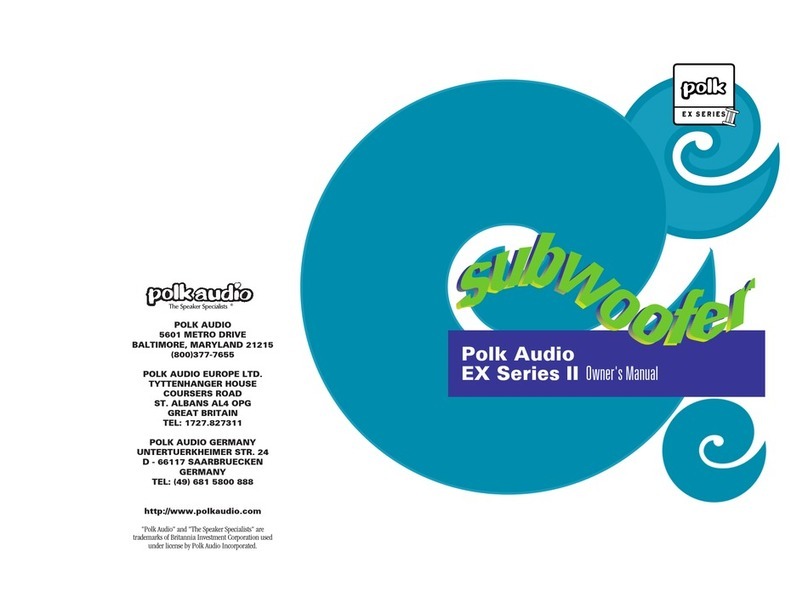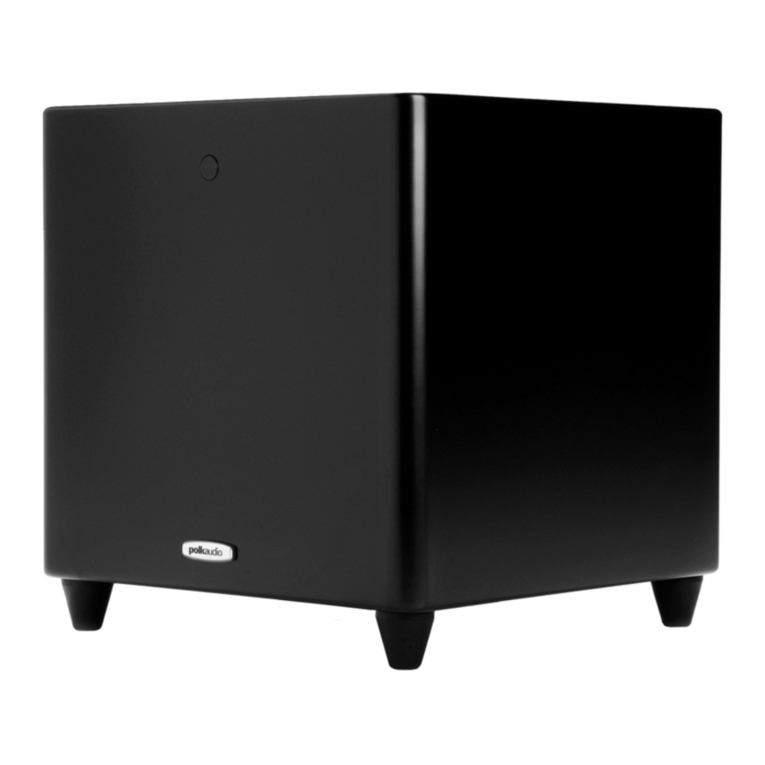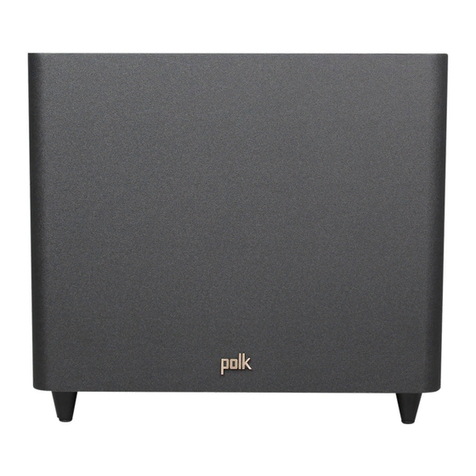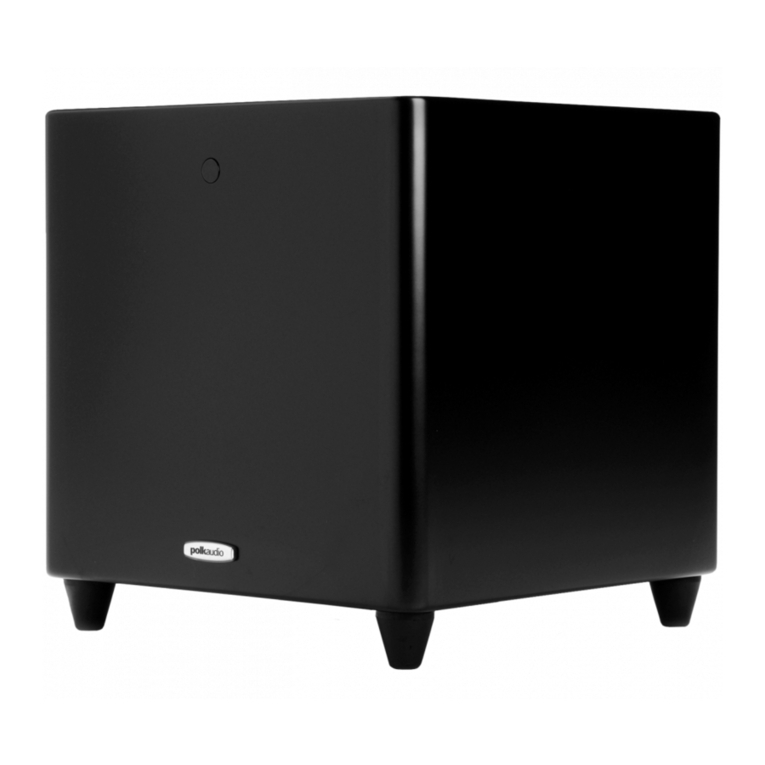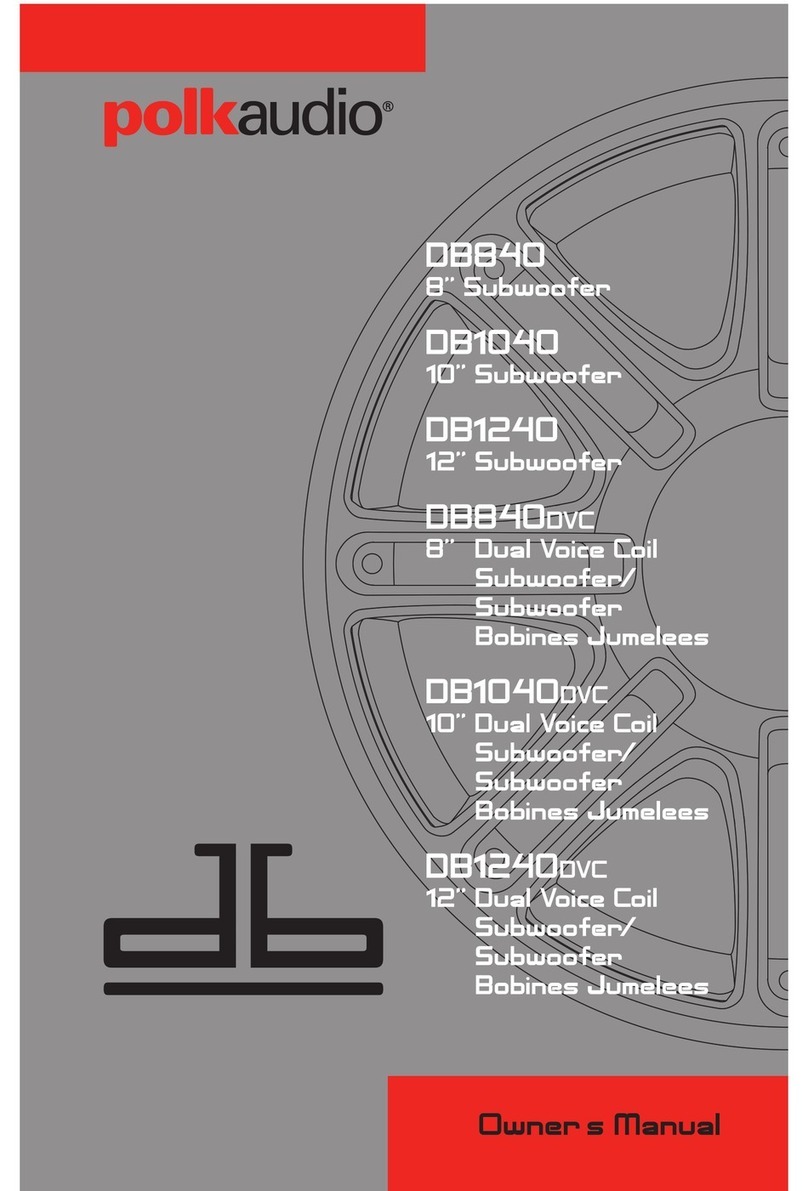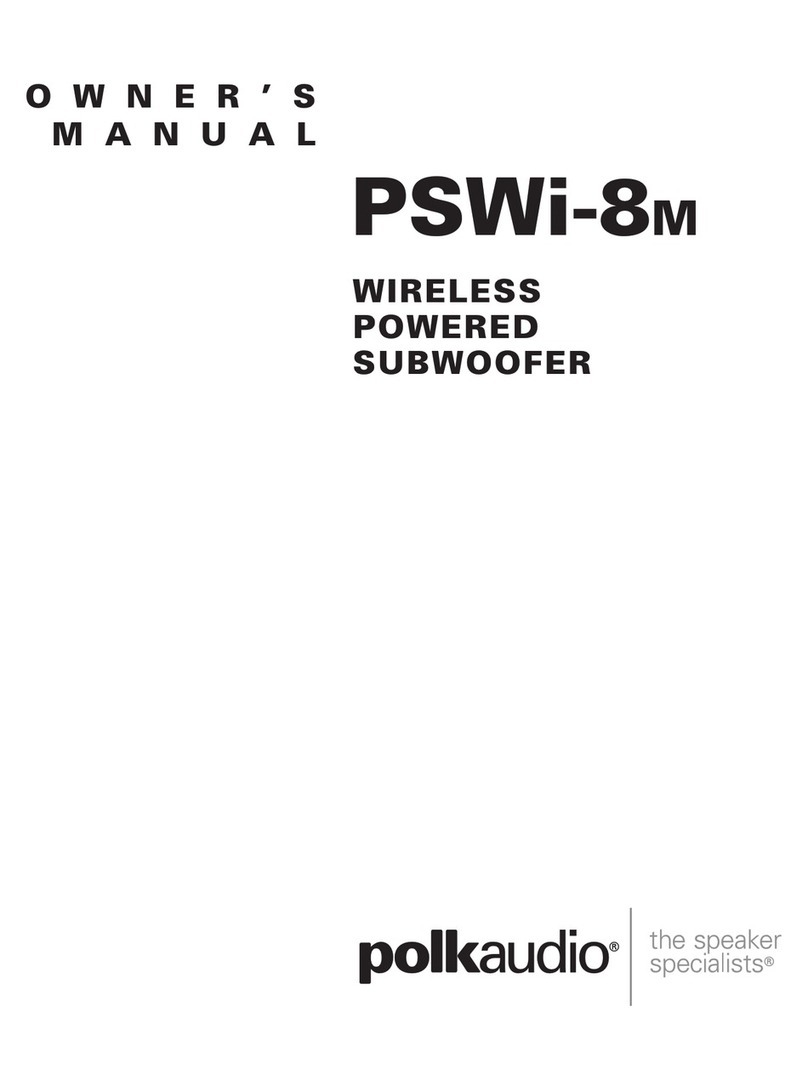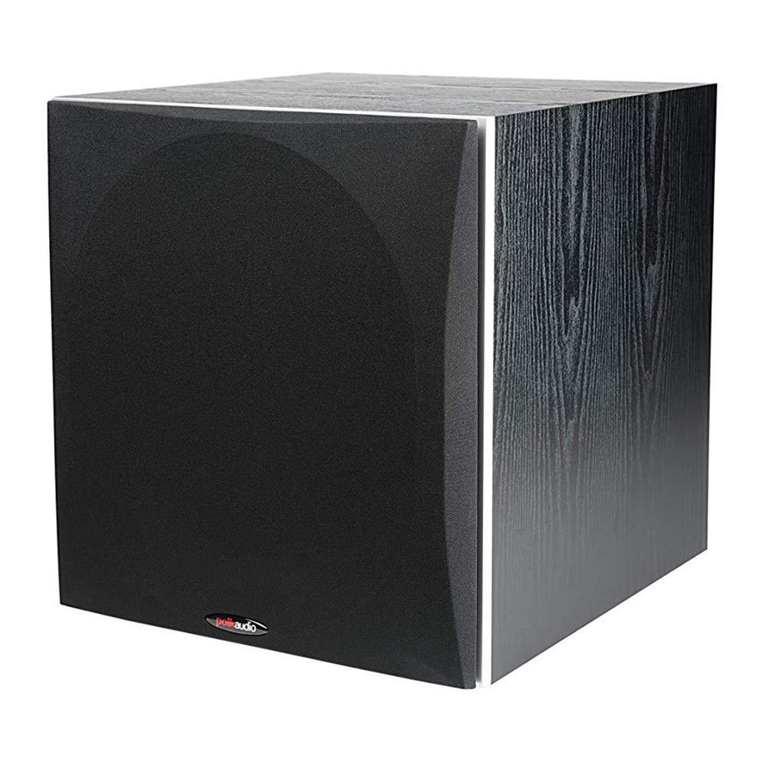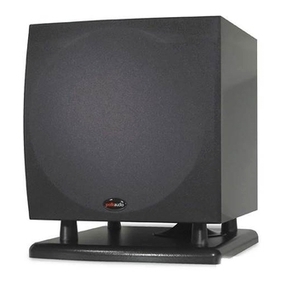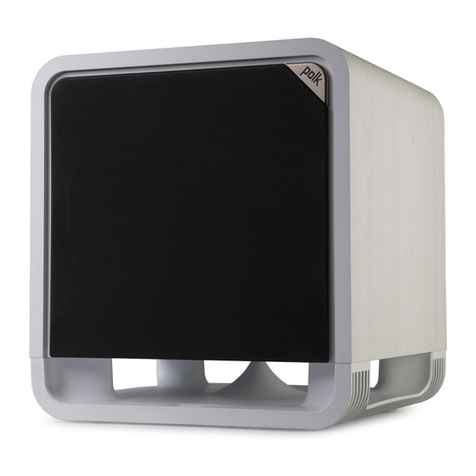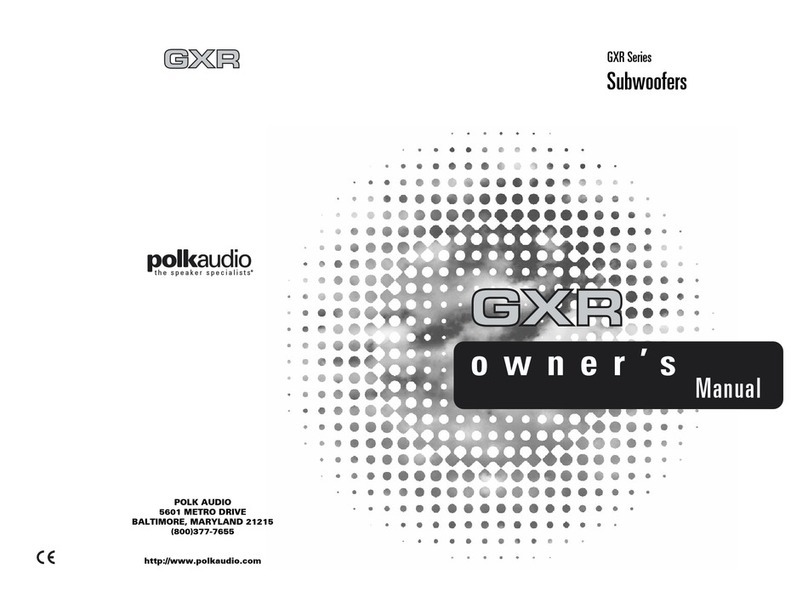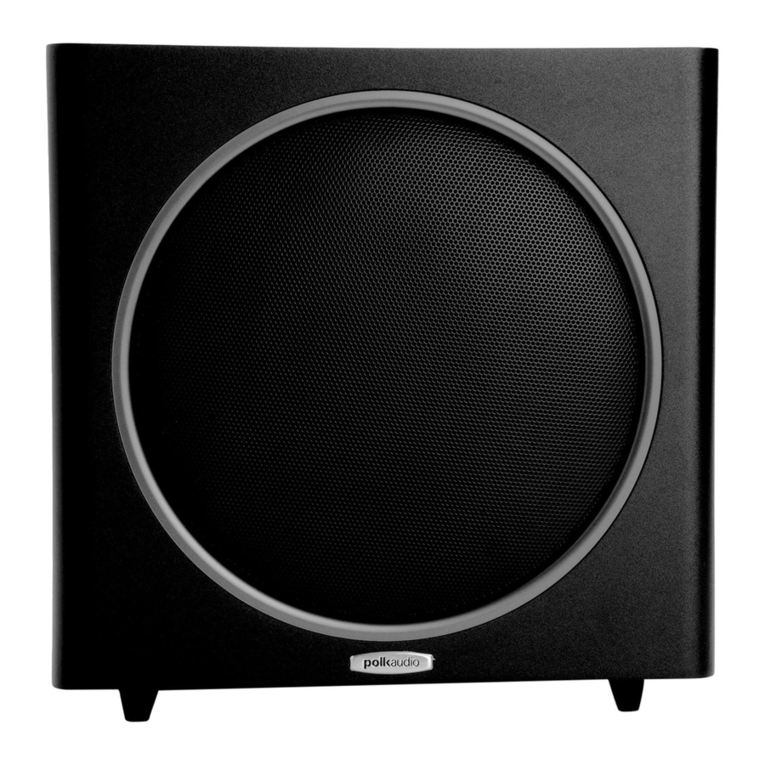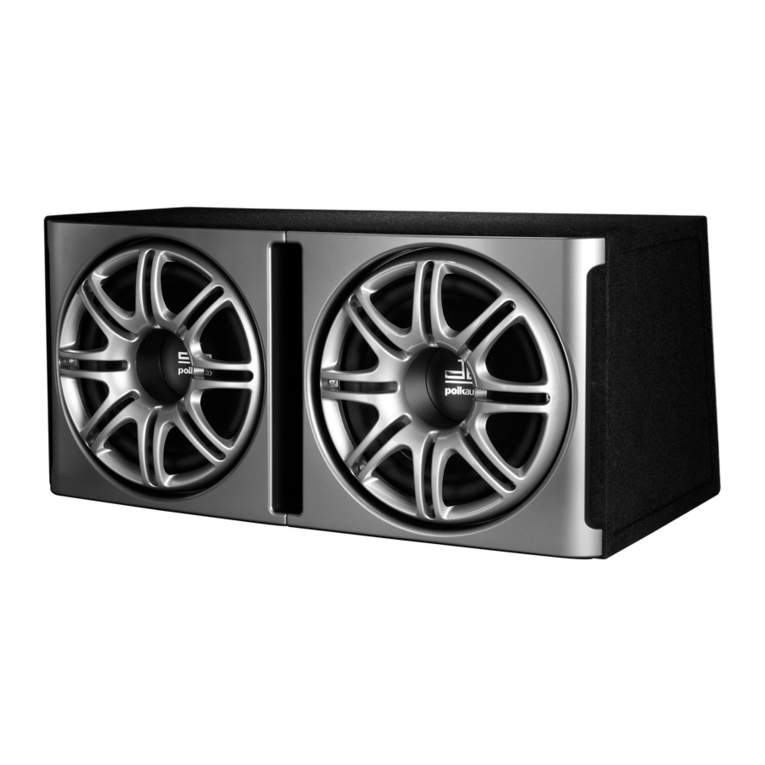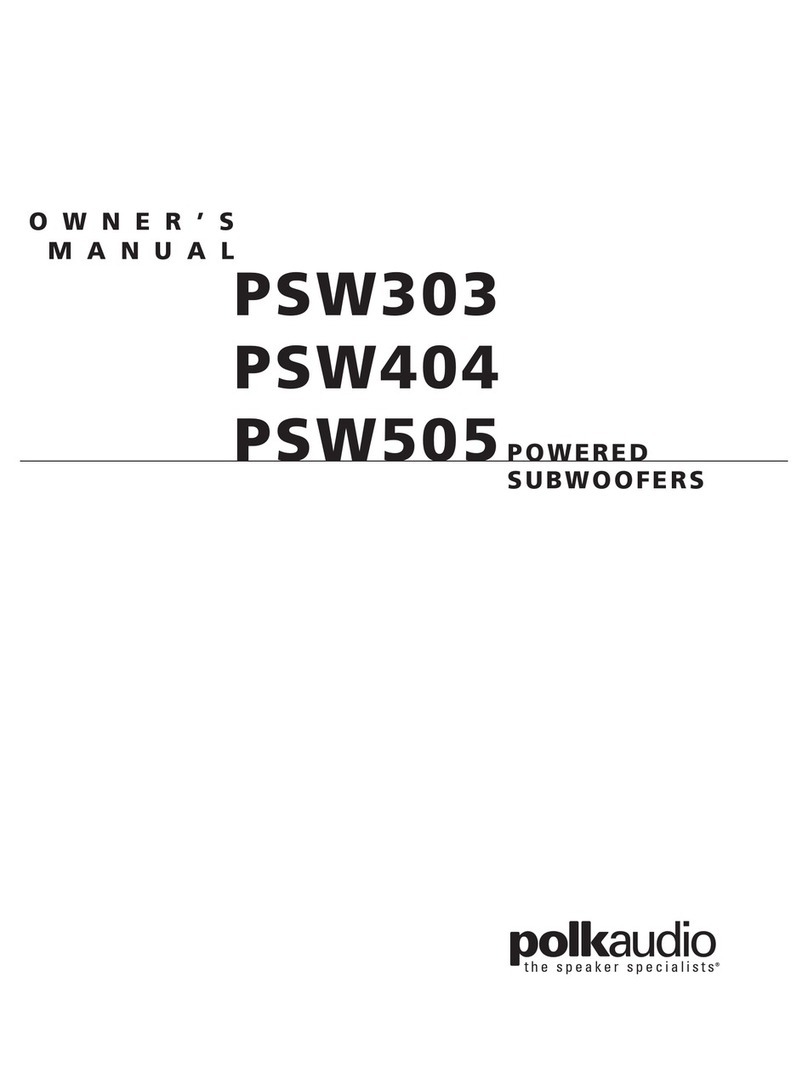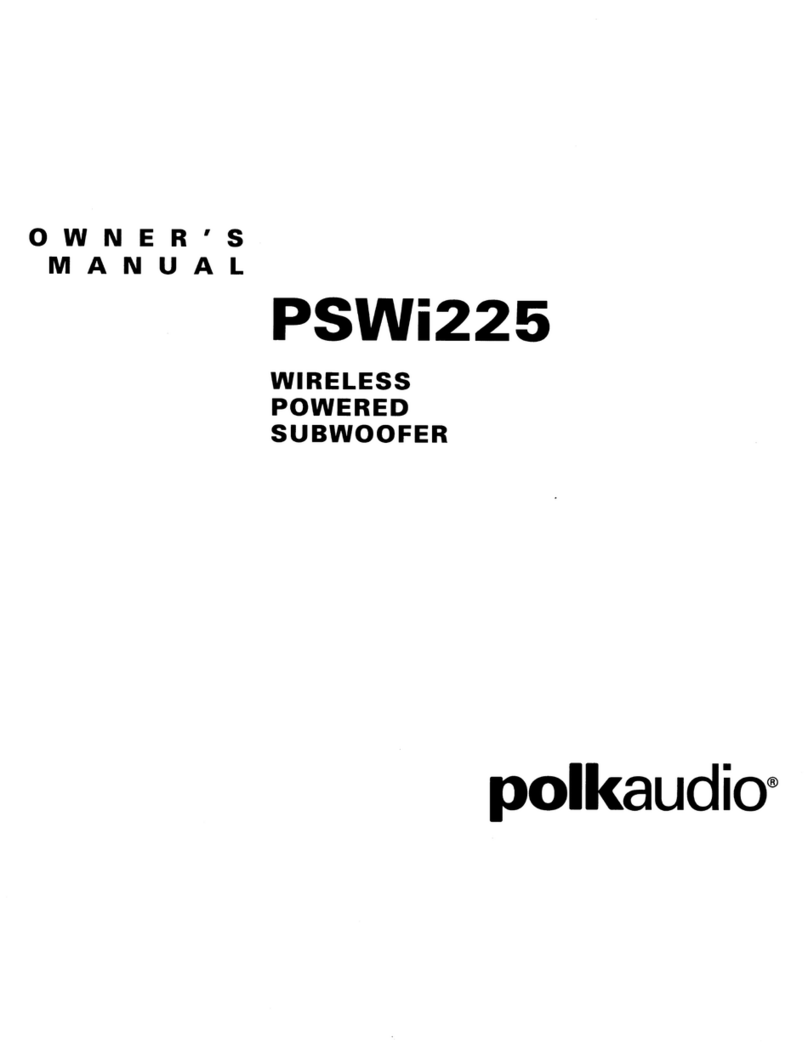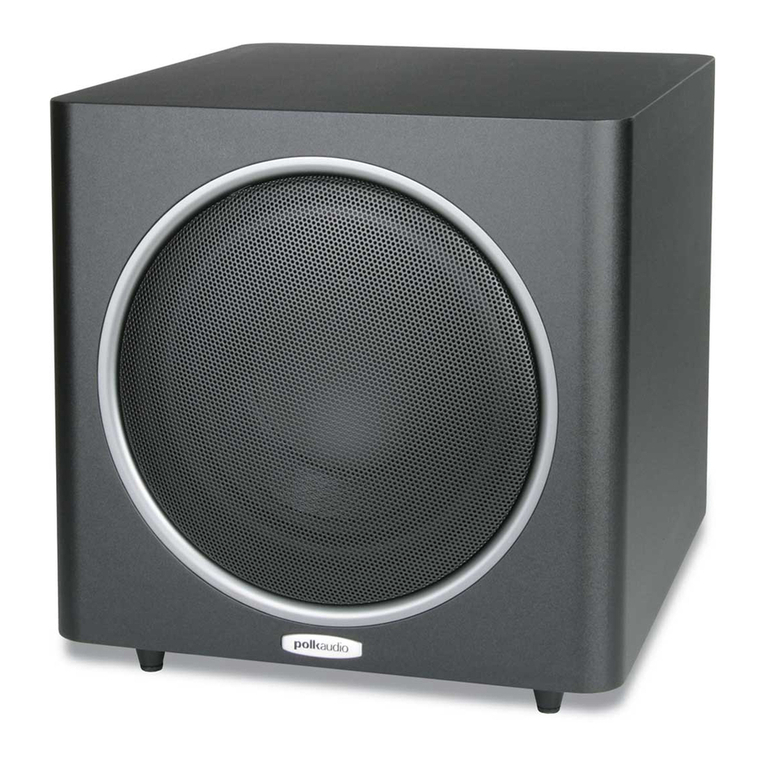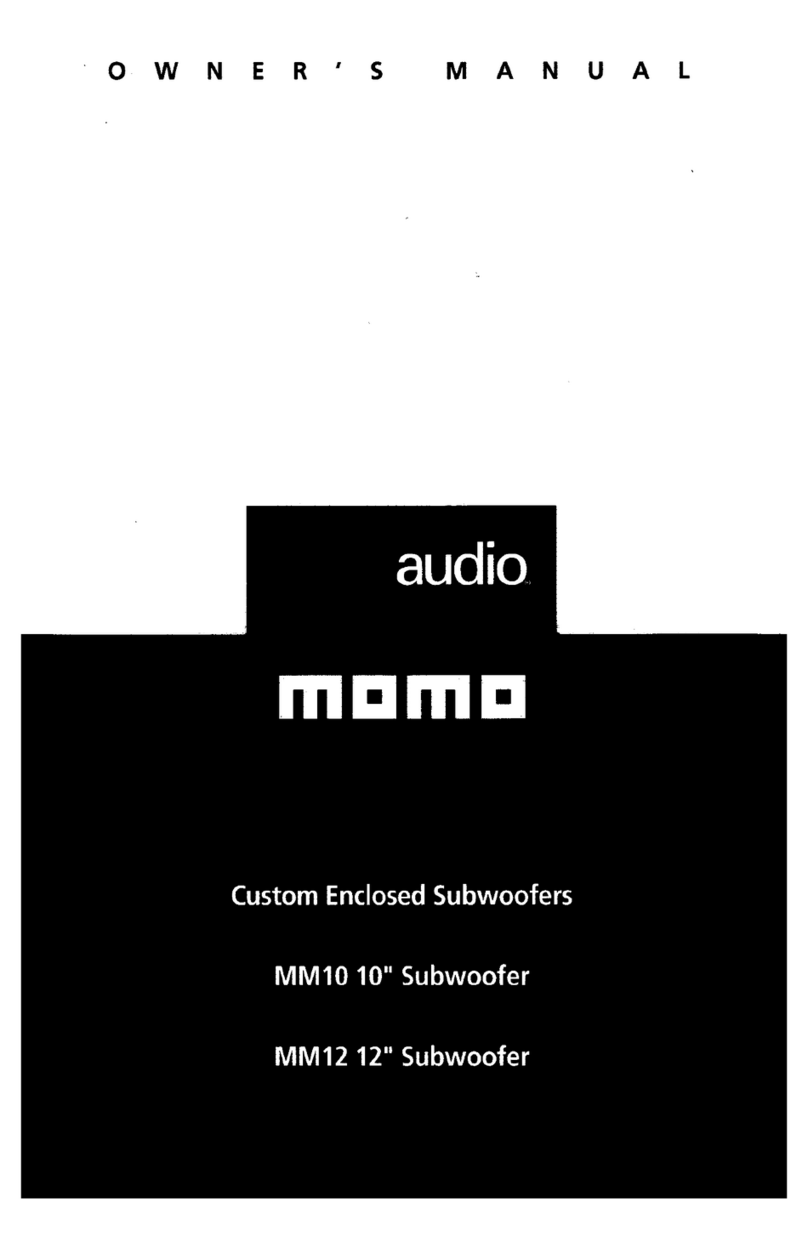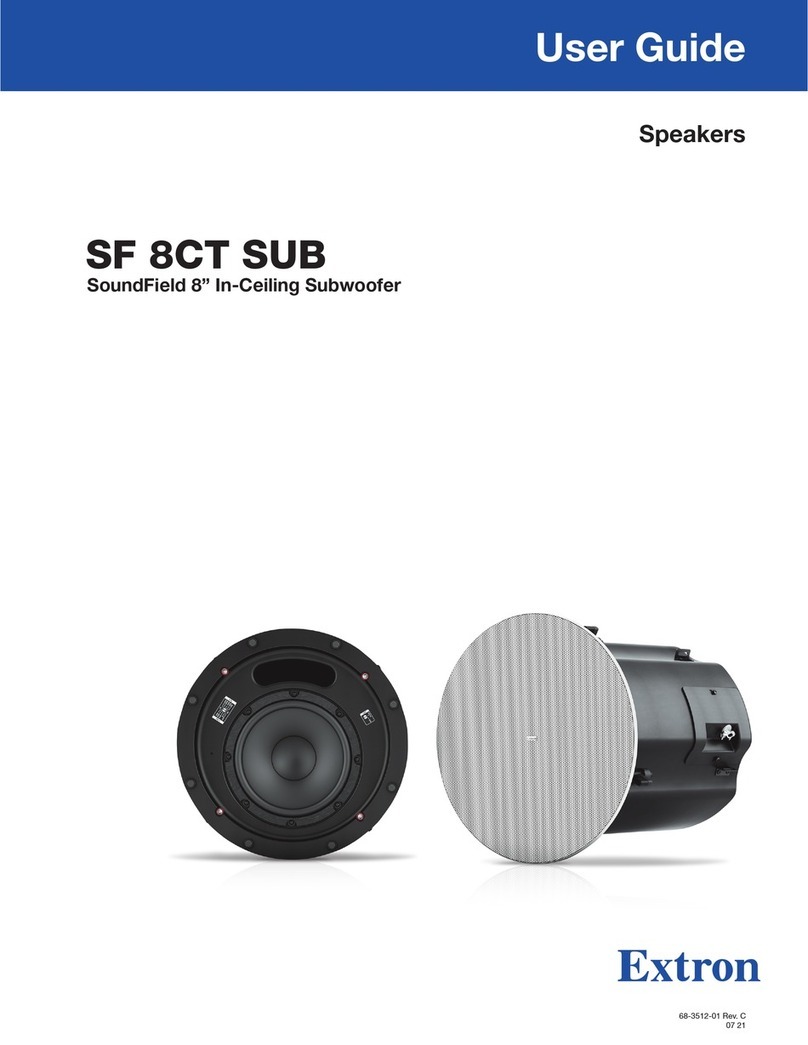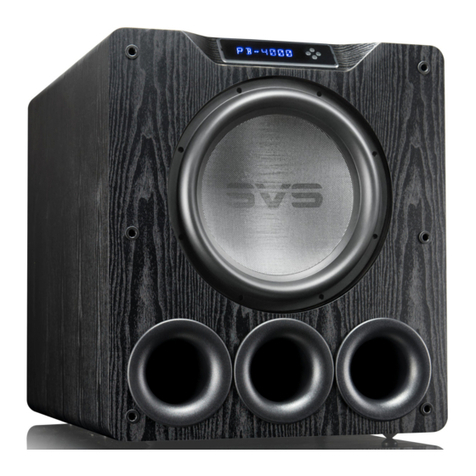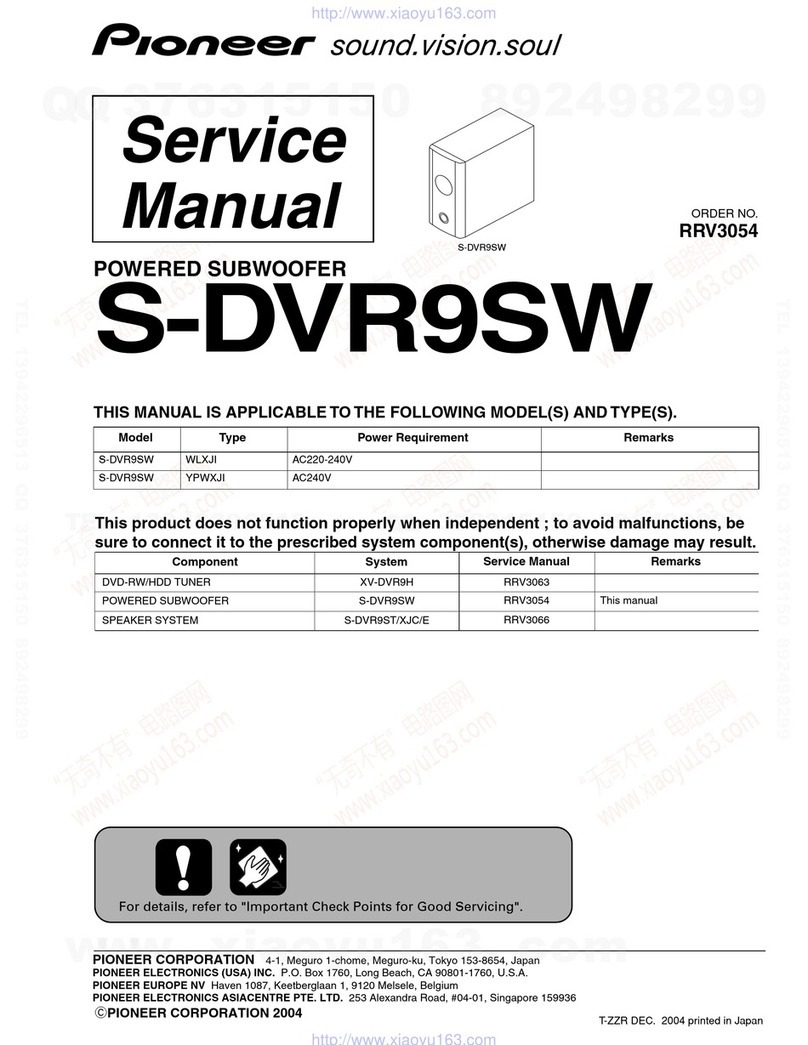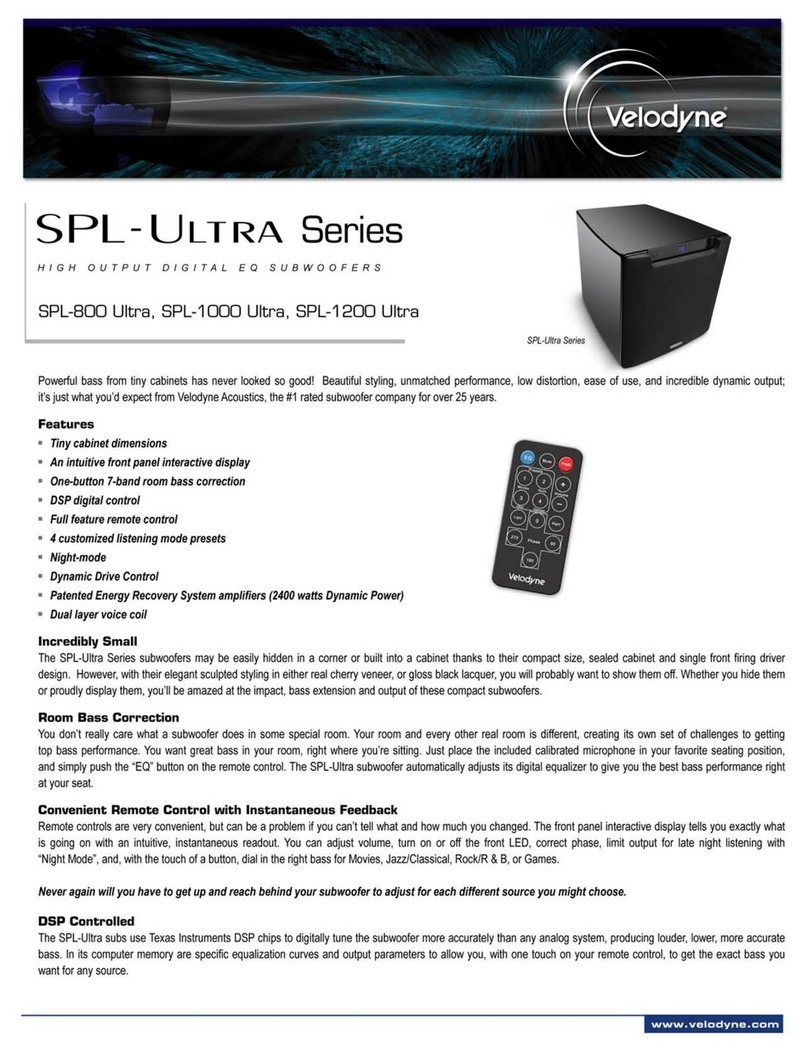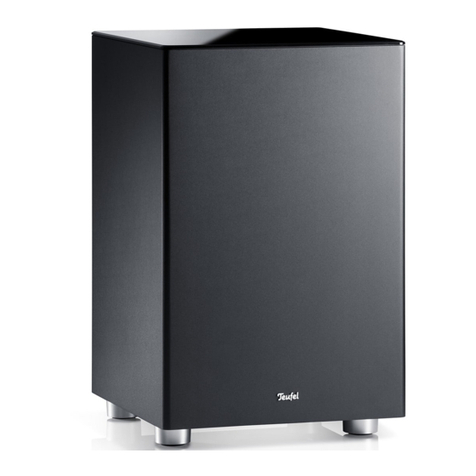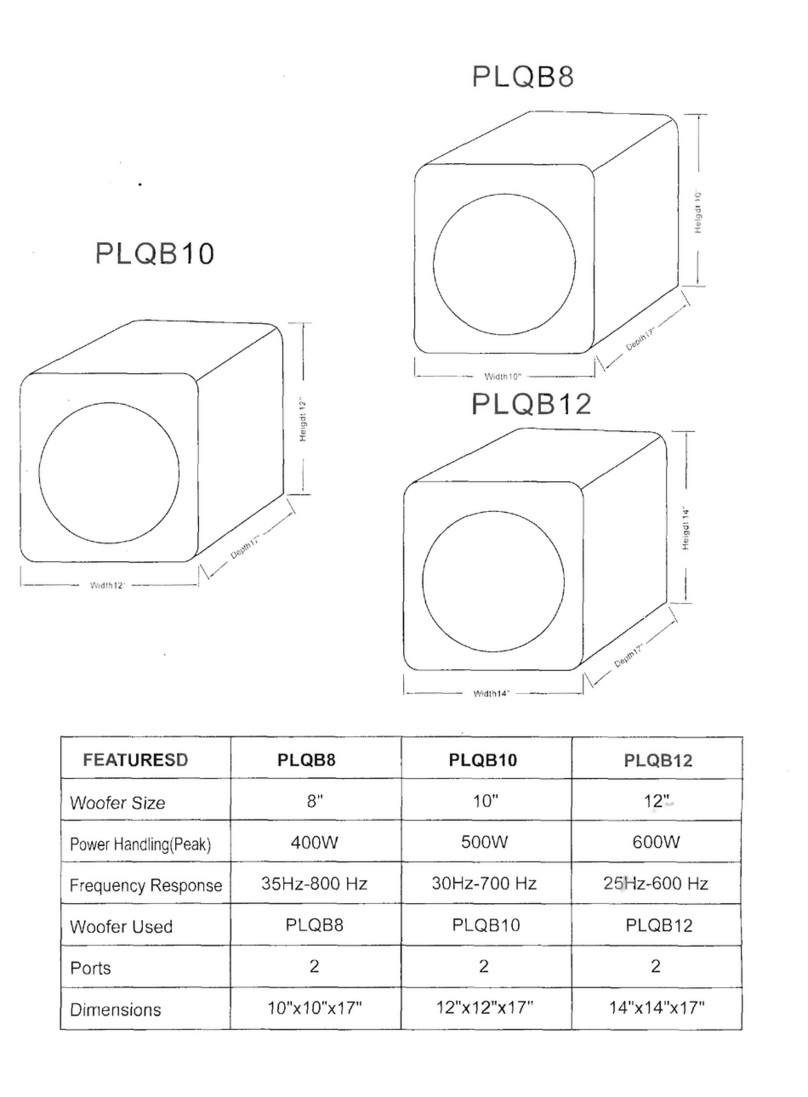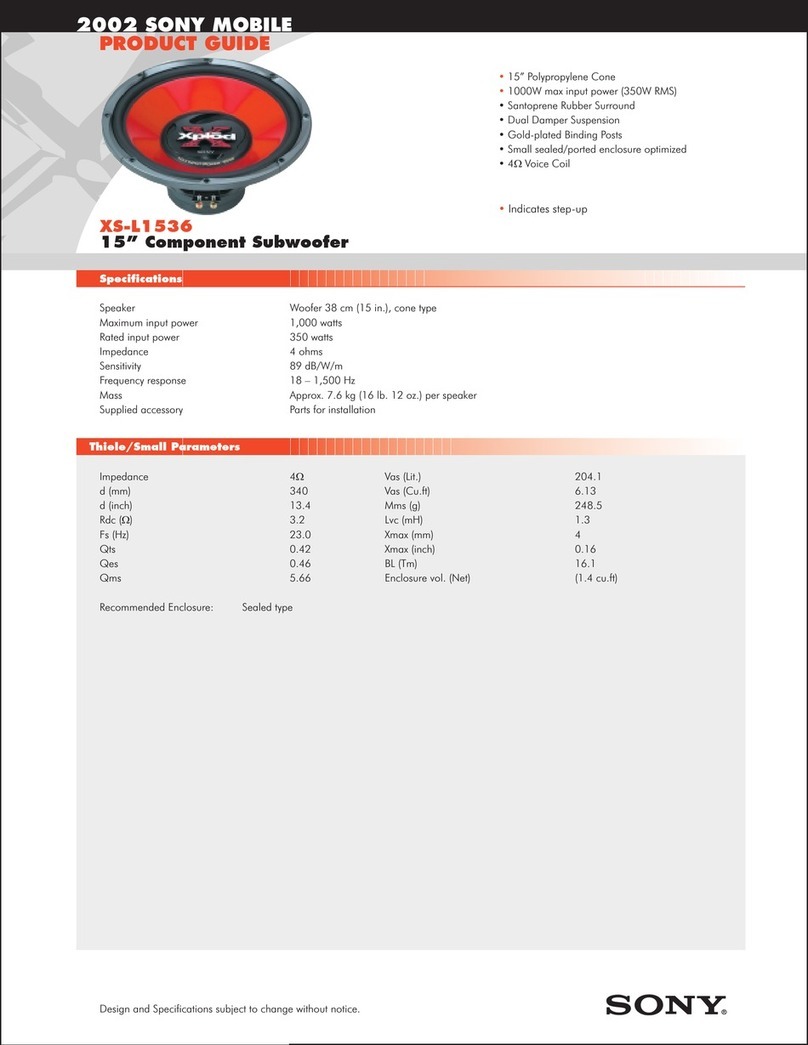
ENGLISH
PRECONDITIONING PERIOD
db Subwoofers will achieve even greater performance once
they are thoroughly broken in. To break in your new db
Subwoofers, play 20 to 30 hours of music at moderate levels.
GET MORE INFORMATION ONLINE AT POLK
UNIVERSITY:
www.polkaudio.com/car/faqad/index.php
OPTIMAL CROSSOVER SETTING
We recommend using an active crossover with a 12 to
18dB per octave low pass filter slope, and setting it to
an initial setting of 80 to 90Hz as a good starting point.
This is an optimal crossover setting on most vehicles.
INVERTING PHASE
Depending on the placement of your subwoofer enclosure
and associated components, it may be necessary to invert the
phase of one or another of your system’s connections in order
to gain better subwoofer/mid-range blending. Inverting the
phase simply means switching the positive connections with
the negative connections at the amplifier. If you choose to do
this, invert the phase of only one set of speakers (either your
mains, or your subs, never both).
LOW FREQUENCY CUT-OFF FOR
MID-RANGE SPEAKERS IN
SYSTEMS WITH SUBWOOFERS
Now that you have a subwoofer in your system, you may
want to decrease the amount of bass going to your midrange
speakers. This will get you better mid-range sound and
increase the power handling. There are two ways to roll off
the bass before it gets to your mid-range speakers. One way
is to use a “bass blocker,” a capacitor placed in series with
the speaker input. Bass blockers are installed in series,
one end connected with the positive lead from your amplifier
and the other end connected to the positive lead of each of
your speakers. Bass blocker capacitors (200 microfarad @
100V, non-polarized) are available at any Radio Shack or
electronic parts supply house. The other route is to use an
electronic crossover device that allows filtering below 100Hz
or so. Find these devices at your authorized Polk Audio dealer.
TECHNICAL ASSISTANCE OR SERVICE
If, after following these hookup and installation directions, you
experience difficulty, please double check all wire connections.
Make certain your electronic equipment is operating correctly
by hooking up another speaker to the speaker output. For
example, if you are not getting sound from the left channel
speaker, connect the right channel speaker to the left output.
If you still get no sound from that side, the problem is in your
amplifier or source electronics. Should you isolate the problem
to the speaker, contact the authorized Polk Audio dealer where
you bought your speakers. Authorized Polk Audio dealers are
the best source for advice and assistance. Polk Audio’s
Customer Service Department is available from 9am–6pm, EST,
